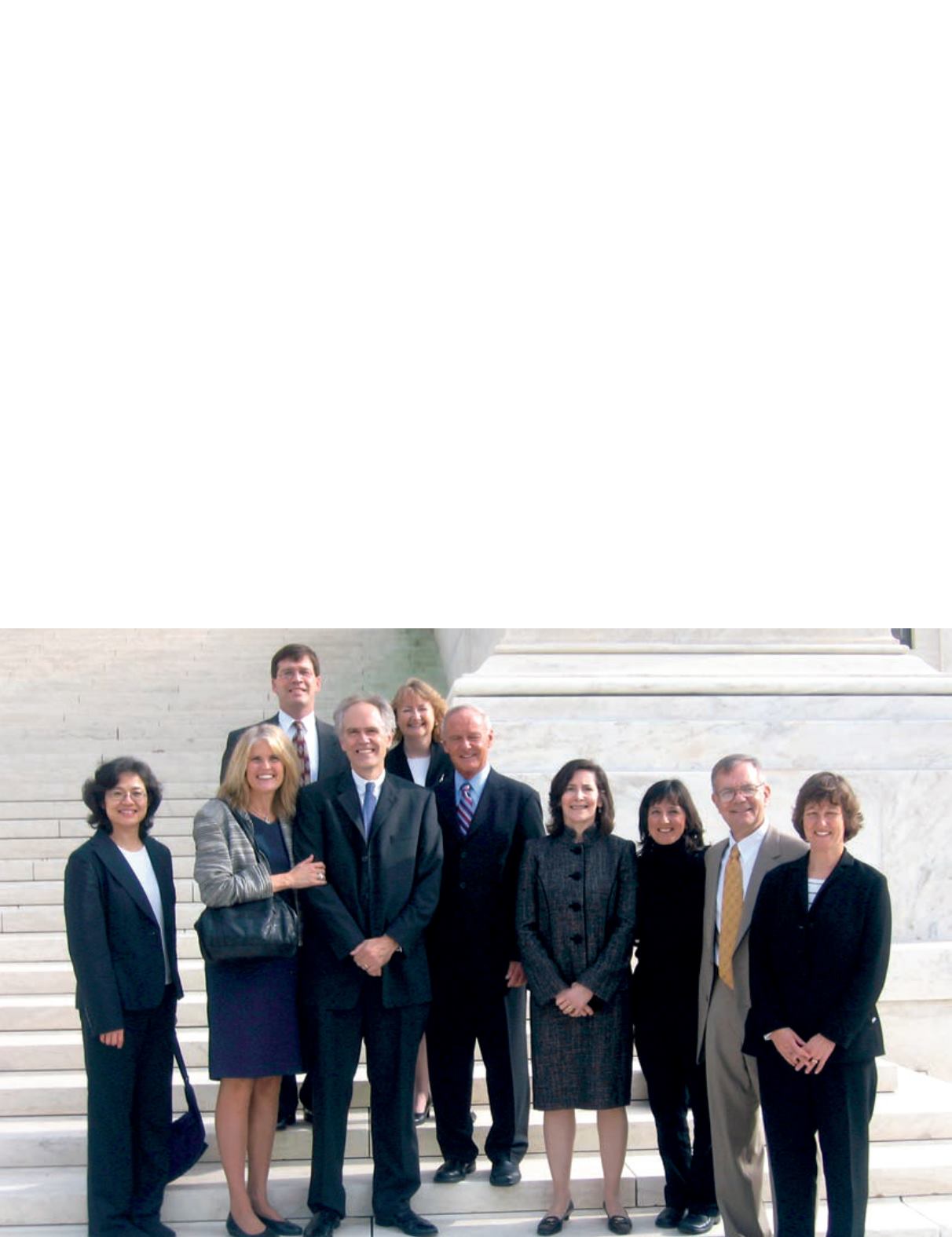
22
“It’s important to put climate change issues in terms
that people can appreciate,” Milkey says. “Obviously, we
all value different things. For me, growing up in New
England, one of the things I value most is the fall foliage.
Understanding that it’s only a matter of time until we no
longer have sugar maples and red maples in Massachu-
setts is pretty depressing.”
After addressing the psychological disconnect that
plagues climate reform, Milkey had yet another obstacle
to overcome; the increasingly contentious politics sur-
rounding climate science, an issue even more polarized
today than it was a decade ago, when Milkey was building
his case.
“It’s gotten worse,” Lazarus says of the partisan divide
on global warming. “Not that long ago, it looked like nat-
ional legislation was a fait accompli. [Republicans] Newt
Gingrich and John McCain, among others, favored climate
legislation.” Lazarus pauses before adding, “Republican
candidates can’t even purport to claim global warming
is a real thing, or they’ll lose their primary base, so they
tend to run away from it. There’s not a single Republican
presidential candidate saying they ever believed in it. It
defies logic.”
Scientific Consensus and
the Supreme Court
Today, the scientific community is in almost total agree-
ment that the earth’s climate is changing as a result of
human activity, and that this represents a huge threat to
the planet and to humanity. What’s surprising is how long
ago the scientific consensus was established.
“One of the most amazing things about this topic is
that the science was effectively settled decades ago; it’s
been almost 24 years since the Rio Treaty was signed,”
says Milkey, referring to the UN Framework Convention
on Climate Change, at which 154 signatories agreed to
stabilize “greenhouse gas concentrations in the atmo-
sphere at a level that would prevent dangerous interfer-
ence with the climate system.”
“When we first started looking into the issues in earnest,
back in 2000, what blew me away was how the science,
even at that time, was really not in doubt.”
Still, no matter how solid the science, Milkey recognized
building a case around proving climate change wouldn’t
work. “We characterized the case to the Supreme Court
as one involving ordinary issues of administrative law
and statutory interpretation,” he explains, “rather than
one about environmental impacts.”
Milkey (third from left) and his wife, Cathie Jo Martin (second from left), on the steps of the U.S. Supreme Court after presenting his argument.
The photo also includes Mass. Assistant Attorney General William L. Pardee ‘66 (yellow tie), who played a key role in the case.


